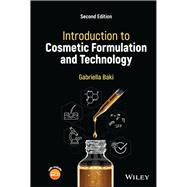An accessible and practical review of cosmetics and OTC drug-cosmetic products
In the newly revised second edition of Introduction to Cosmetic Formulation and Technology, veteran educator and researcher Dr. Gabriella Baki delivers a comprehensive discussion of cosmetics and personal care products, including coverage of basic concepts, ingredient selection, formulation technology, and testing. The book offers a clear and easy-to-understand review of cosmetics and over the counter (OTC) drug-cosmetic products available in the United States.
In this latest edition, the author expands on general concepts and adds brand-new chapters on the basics of cosmetics testing, ingredients, and skin lightening products. Each chapter includes a summary of common abbreviations with questions provided online, alongside a solutions manual for instructors.
Readers will also find:
- A thorough introduction to the basic definitions, claims, and classifications of cosmetics and OTC drug-cosmetic products
- Comprehensive explorations of the current rules and regulations for cosmetics and OTC drug-cosmetic products in the United States and European Union
- Detailed review of cosmetic ingredients, functions, and typical uses both in a dedicated a chapter and included within various others
- Practical coverage of good manufacturing practices for cosmetics, including documentation, buildings and facilities, equipment, and personnel
- Fulsome review of a variety of skin and hair care products, color cosmetics, and other personal care products
Perfect for undergraduate and graduate students studying cosmetic science in chemistry, chemical engineering, pharmaceutical, biomedical, and biology departments, Introduction to Cosmetic Formulation and Technology will also benefit cosmetic chemists, cosmetic product formulators, cosmetic scientists, quality control managers, cosmetic testing specialists, and technicians.









